OSI model
description: model with 7 layers to describe communication systems
30 results
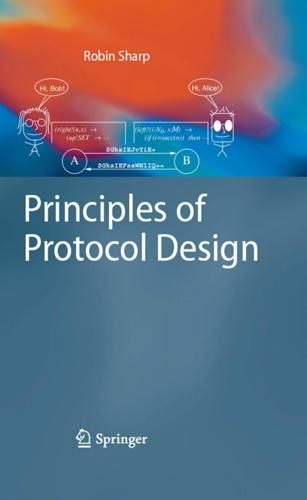
Principles of Protocol Design
by
Robin Sharp
Published 13 Feb 2008
The OSI answer is the Application layer. Although the OSI Reference Model is a very general framework for describing communication systems, which could in principle be realised by any protocols which had the specified functionality, a particular set of standardised services and protocols have been designed for this purpose. These are known as OSI protocols, and originate from several standardisation organisations, particularly ISO, ITU-T (previously CCITT), IEC and IEEE (see Appendix B). 3.3.1 The Internet and Other Layered Architectures The OSI Reference Model architecture is by no means the only layered architecture which you may meet in communication systems.
…
This is a completely new edition of a book which was first published in 1994, where the main focus of many international efforts to develop data communication systems was on OSI – Open Systems Interconnection – the standardised architecture for communication systems developed within the International Organisation for Standardization, ISO. In the intervening 13 years, many of the specific protocols developed as part of the OSI initiative have fallen into disuse. However, the terms and concepts introduced in the OSI Reference Model are still essential for a systematic and consistent analysis of data communication systems, and OSI terms are therefore used throughout. There are three significant changes in this second edition of the book which particularly reflect recent developments in computer networks and distributed systems.
…
In particular, the rules for the composition of processes make it possible to analyse protocols which rely on the the use of other protocols in some layered manner, as is commonly the case in communication systems. A well-known example of this is seen in the OSI standard architecture for communication systems [133]. Some simple illustrations of the approach and an introduction to the OSI Reference 4 1 Introduction Model will be given in the Chapter 3, where we also consider the general properties which might be desirable for services in distributed systems. 1.3 Techniques for Actual Protocols The central chapters of the book are devoted to a presentation of techniques for providing particular types of service by the use of appropriate protocols.
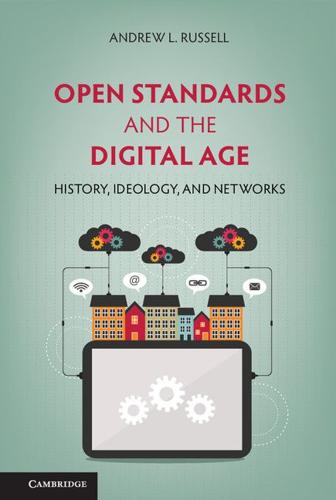
Open Standards and the Digital Age: History, Ideology, and Networks (Cambridge Studies in the Emergence of Global Enterprise)
by
Andrew L. Russell
Published 27 Apr 2014
As we saw in Chapter 7, Bachman and Zimmermann were steering very capably the OSI reference model through the various stages of consensus building required by the formal rules of international standardization. In November 1980, Zimmermann was able to shepherd the revised model to the status of draft proposal, before it advanced to a draft international standard in January 1982 and finally was approved formally by ISO in May 1983 as an international standard, “ISO 7498: The Basic Reference Model for Open System Interconnection.” During the same few years, ISO standards for transport protocols that would fit within the OSI reference model – alternatives and direct competitors to TCP/IP – appeared as draft proposals in June 1982.20 Most Arpanet engineers who were struggling to implement TCP during 1982 did not pay much attention to the technical or procedural nuances of the work on OSI taking place within ISO; they certainly were not encouraged to do so by the Arpanet project managers such as Cerf and Kahn.
…
In the formative discussions of the reference model in 1977 and 1978, there was an overwhelming consensus that the group should begin with the definition of a layered and modular system architecture (see Figure 7.1 for an early drawing of the seven layer model).39 Figure 7.1 Seven-level reference model as Margarita Glass, 1979. Source: John Aschenbrenner.Courtesy of the Charles Babbage Institute, University of Minnesota, Minneapolis. “Report from July 18, 1979, second meeting of TC 97/SC 16, June 11–15, 1979,” Bachman Papers, Box 18, Folder 18/19. The OSI reference model progressed steadily, if not rapidly, along the standards track. In July 1979, TC97 approved the reference model as a working draft, and authorized SC16 to make revisions and incorporate suggestions. Zimmermann, as chairman of the SC16 Architecture Working Group, led the charge. In November 1980, Zimmermann was able to shepherd the revised model to the status of draft proposal.
…
Bachman, in a 2004 interview, recalled how well his vision held up as the reference model proceeded along the path to international standardization: “I would say that 75% was based on my work at Honeywell. It was all well documented. We worked, as you sometimes have to do, to cover the traces.”40 As the OSI reference model progressed from a proposal in 1977 to an international standard in 1983, hundreds of engineers, computer scientists, and government officials from more than two dozen countries joined the SC16 working groups and national delegations in SC16’s parent body, ISO TC97. In these negotiations, the clean theoretical lines of Bachman’s layered architecture gave way to the messy reality of technological uncertainty and strategic posturing.
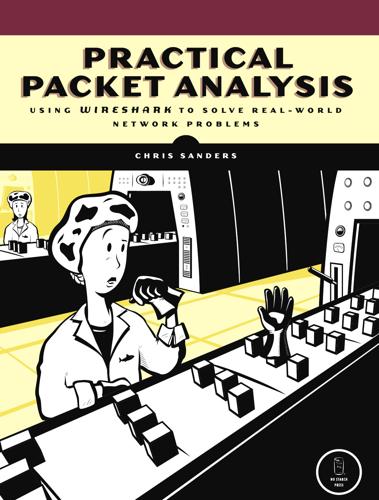
Practical Packet Analysis: Using Wireshark to Solve Real-World Network Problems
by
Chris Sanders
Published 15 Mar 2007
Although the various network protocols are often drastically different, most have to address the following issues: Flow control The generation of messages by the receiving system that instruct the sending system to speed up or slow down its transmission of data Packet acknowledgment The transmission of a return message from the receiving system to the sending system to acknowledge the receipt of data Error detection The use of codes by the sending system to verify that the data sent wasn't damaged during transmission Error correction The retransmission of data that was lost or damaged during the initial transmission Segmentation The division of long streams of data into smaller ones for more efficient transfer Data encryption A function that uses cryptographic keys to protect data transmitted across a network Data compression A method for reducing the size of data transmitted across a network by eliminating redundant information The Seven-Layer OSI Model Protocols are separated based on their functions using an industry-standard reference model called the Open Systems Interconnections (OSI) reference model. This model was originally published in 1983 by the International Organization for Standardization (ISO) as a document called ISO 7498. The OSI model divides the network communications process into seven distinct layers: Application (Layer 7) Presentation (Layer 6) Session (Layer 5) Transport (Layer 4) Network (Layer 3) Data link (Layer 2) Physical (Layer 1) The seven layers in the hierarchical OSI model (Figure 1-1) make it much easier to understand network communication.
…
As a matter of fact, the OSI model is not the only networking model that exists—for example, some people prefer the Department of Defense (DoD) model. We'll work around the concepts of the OSI model in this book, so we won't cover the DoD model here. Let's take a broad look at the functions of each of the OSI model's layers as well as some examples of the protocols used in each. Figure 1-1. A hierarchical view of the seven layers of the OSI model The Application Layer The application layer, the topmost layer on the OSI model, provides a means for users to actually access network resources. This is the only layer typically seen by end users, as it provides the interface that is the base for all of their network activities.
…
The OSI model divides the network communications process into seven distinct layers: Application (Layer 7) Presentation (Layer 6) Session (Layer 5) Transport (Layer 4) Network (Layer 3) Data link (Layer 2) Physical (Layer 1) The seven layers in the hierarchical OSI model (Figure 1-1) make it much easier to understand network communication. The application layer at the top represents the actual programs used to access network resources. The bottom layer is the physical layer, through which the actual network data travels. The protocols at each layer work together to package data for the next layer up. Note The OSI model is no more than an industry-recommended standard; protocol developers are not required to follow it exactly. As a matter of fact, the OSI model is not the only networking model that exists—for example, some people prefer the Department of Defense (DoD) model.

Protocol: how control exists after decentralization
by
Alexander R. Galloway
Published 1 Apr 2004
Its standards are based on voluntary participation, and thus the adoption of ISO standards is driven largely by market forces (as opposed to mandatory standards that are implemented in response to a governmental regulatory mandate). Once established, ISO standards can have massive market penetration. For example, the ISO standard for film speed (100, 200, 400, etc.) is used globally by millions of consumers. Another ISO standard of far-reaching importance is the Open Systems Interconnection (OSI) Reference Model. Developed in 1978, the OSI Reference Model is a technique for classifying all networking activity into seven 21. The name ISO is in fact not an acronym, but derives from a Greek word for “equal.” This way it avoids the problem of translating the organization’s name into different languages, which would produce different acronyms.
…
Foucault’s later work on biopower and biopolitics is significant in this respect, for while Foucault never reduced technology to an empirical “thing,” his analyses of institutions always emphasize the various correlations between bodies and things. Protocol adopts a similar methodological outlook, considering technical standards (such as the OSI Reference Model), network technologies (HTTP), institutional histories (IEEE), and, significantly, instances of “tactical media.” Above all, the political economy of protocol is that of management, modulation, and control. Technically and politically the “control society” emerges as much from cybernetics research as it does from a military-industrial imperative toward the “governmentality” of information systems.
…
These layers are nested, meaning that the application layer is encapsulated within the transport layer, which is encapsulated with the Internet layer, and so on. This diagram, minus its “layer” captions, appears in RFC 791. The four layers are part of a larger, seven-layer model called the OSI (Open Systems Interconnection) Reference Model developed by the International Organization for Standardization (ISO). Tim Berners-Lee, inventor of the Web, uses a 13. Braden, “Requirements for Internet Hosts,” pp. 6–7. 14. Jonathan Postel, “Transmission Control Protocol,” RFC 793, September 1981, p. 7. Physical Media 39 slightly different four-layer model consisting of “the transmission medium, the computer hardware, the software, and the content.”
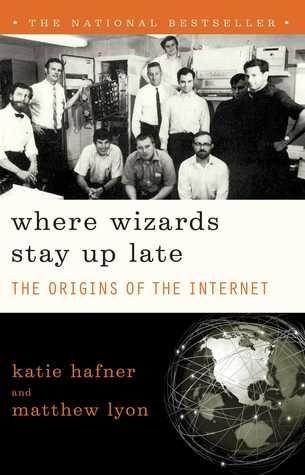
Where Wizards Stay Up Late: The Origins of the Internet
by
Katie Hafner
and
Matthew Lyon
Published 1 Jan 1996
And there was mounting concern that the National Bureau of Standards would decide to support an emergent rival standard for network interconnection called the OSI Reference Model. Several years earlier, the International Organization for Standardization, ISO, had begun to develop its own internetworking “reference” model, called OSI, or open-systems interconnection. Since the 1940s, ISO had specified worldwide standards for things ranging from wine-tasting glasses to credit cards to photographic film to computers. They hoped their OSI model would become as ubiquitous to computers as double-A batteries were to portable radios. A battle of sorts was forming along familiar lines, recalling the confrontation between AT&T and the inventors of packet-switching during the birth of ARPANET.
…
But the Internet community—people like Cerf and Kahn and Postel, who had spent years working on TCP/IP—opposed the OSI model from the start. First there were the technical differences, chief among them that OSI had a more complicated and compartmentalized design. And it was a design, never tried. As far as the Internet crowd was concerned, they had actually implemented TCP/IP several times over, whereas the OSI model had never been put to the tests of daily use, and trial and error. In fact, as far as the Internet community was concerned, the OSI model was nothing but a collection of abstractions. “Everything about OSI was described in a very abstract, academic way,” Cerf said.
…
NEARnet Netscape Web browser Network Control Center (NCC) Network Control Protocol (NCP) Network Information Center (NIC) network mail, see electronic mail Network Measurement Center network randoms Network Working Group (NWG) BBN input and file-transfer protocol of “glitch-cleaning committee” of host-to-host protocol of meetings and teleconferences of protocol design philosophy of Requests for Comments (RFCs) of Telnet protocol of New Frontier Newman, Robert Newsweek Newton, Isaac NewYork Times night vision Nixon, Richard NLS (oNLine System) NLS JOURNAL MAIL noise North American Aviation North Carolina, University of NSFNET nuclear power: ballistic missiles and communications survivability detecting tests of German development of NYSERNET (New York State Education Research Network) Olsen, Ken computers developed by On-Line Software International oNLine System (NLS) Open Systems Interconnection (OSI) Ornstein, Severo hardware effort directed by Honeywell contracts of synchronizer bugs papers of oscilloscopes OSI Reference Model Otis Elevator Pacific Bell Packet Communications Incorporated Papert, Seymour paper tape PARC Universal Packet (PUP) PARRY Partridge, Craig passwords PDP-1 computer PDP-8 computer PDP-10 computer PDP-11 minicomputer Pennsylvania, University of: ENIAC project at performing arts centers personal computers physics pigeons Pilot ACE computer Pocket organizers Pogran, Ken political action groups Postal Rate Commission Postal Service, U.S.
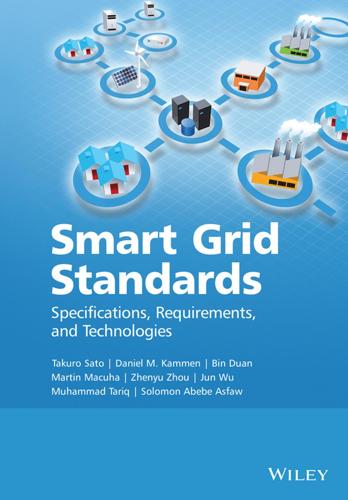
Smart Grid Standards
by
Takuro Sato
Published 17 Nov 2015
Similar to the development in computer networks, open protocols such as TCP/IP enable end users to choose hardware (network cards/adaptors, modems) and software (operating systems, application programs) components from different manufacturers. However, the cost of an Open System Interconnect (OSI) seven-layer model-based protocol is prohibitively high for most building automation applications. Instead of using all seven layers of the OSI model, only the OSI functionality that is actually needed should be included, thereby the seven-layer architecture is collapsed. In the collapsed architecture, only selected layers of the OSI model are employed, while other layers are not used, which reduces message overhead, lowers cost, and increases system performance. BACnet is based on a four-layer collapsed architecture as shown in Figure 5.19 [46].
…
It is assumed that these applications should be able to communicate with TASE.2 through a specific interface. The specific interface between TASE.2 and the control center applications is a local issue and not a part of this standard. As shown in Figure 3.11, the protocol architecture for TASE.2 requires the use of ISO protocols in layers 5–7 of the OSI reference model. The Transport Profiles (layers 1–4) may use virtually any standard or de facto standard (including TCP/IP) connection-mode transport layer and connectionless-mode network layer services over any type of transmission media. The TASE.2 Data Exchange network may be either a private or public packetswitched or mesh network connecting communications processors which provide adequate routing functionality to allow for redundant paths and reliable service.
…
Unlike C12.18 or C12.21 protocols, which only support session-oriented communications, the sessionless communication has the advantage of requiring less complex handling on both sides of the communication links and reduces the number of signaling overhead. ANSI C12.22 has a common application layer (layer 7 in the OSI, Open System Interconnection, reference model), which provides a minimal set of services and data structures required to support C12.22 nodes for the purposes of configuration, programming, and information retrieval in a networked environment. The application layer is independent of the underlying network technologies. This enables interoperability between C12.22 with already existing communication systems.
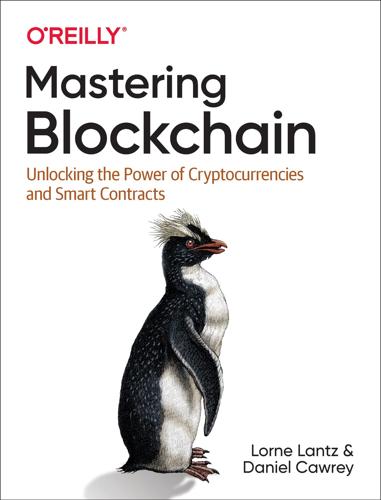
Mastering Blockchain: Unlocking the Power of Cryptocurrencies and Smart Contracts
by
Lorne Lantz
and
Daniel Cawrey
Published 8 Dec 2020
Figure 10-1. Rate of adoption of different technologies over time The More Things Change In the 1970s, at the dawn of the internet, a group of computer industry representatives from the United States, the United Kingdom, and France got together and devised the Open Systems Interconnection (OSI) model. Their aim was to create an open and multilayered set of standardized protocols for data exchange on the internet. By the 1980s, the effort had been backed by many stakeholders, including engineers, regulators, and computer and telecommunications companies. However, by the early 1990s two more efficient and nimble standards had come to dominate instead: Transmission Control Protocol and Internet Protocol, or TCP/IP.
…
ARPANET, an early version of the internet, is the first network to use packet switching. 1970s Telephone carriers explore the idea of packet switching via “virtual” circuits, proposed in order to protect analog circuit revenue. However, the original proponents of packet switching propose a more innovative distributed datagram model. Following this divide, the OSI model is devised. 1980s The reference model for OSI is published, including options for both packet switching implementations. The US government, the main sponsor for internet research, mandates purchasing OSI-standard computers by 1990. 1990s TCP/IP, first used and developed throughout the ’80s and used in the ARPANET as the successor to its Network Control Program (NCP), gains traction.
…
Gox-Bitfinex multisignature wallet contracts, Multisignature Contracts-Multisignature Contracts N Namecoin, Altcoins naming services, Naming Services network hash rate, Block discovery networkscentralized versus decentralized versus distributed design, Distributed Versus Centralized Versus Decentralized Corda, The Corda networknodes having visibility into transactions, Corda ledger DAG design, DAGs Libra's centralization challenge, Novi transactions confirmed by network on Bitcoin, Transaction life cycle New York Department of Financial Services (NYDFS), FinCEN Guidance and the Beginning of Regulation NiceHash, NiceHash Nightfall blockchain, Nightfall nodes, Distributed Versus Centralized Versus Decentralizedin Avalance consensus mechanism, Avalanche Libra, validator and full nodes, How the Libra Protocol Works Lightning, Lightning nodes and wallets in proof-of-stake networks, Proof-of-Stake nonces, The mining processin block discovery on Bitcoin, The mining process running out of nonce space or overflow, The mining process in Satoshi Nakamoto's whitepaper, The Whitepaper noncustodial wallets, Wallet Types: Custodial Versus Noncustodial(see also wallets) nonfungible tokens, Fungible and Nonfungible TokensERC-721 standard for, ERC-721 Nothing-at-Stake problem, Proof-of-Stake Novi wallet, Novi NuBits, NuBits NXT blockchain, NXT O oligarchical model dominating the web, Web 3.0 Omni Core, Understanding Omni Layerlimitations of, Deploying and Executing Smart Contracts in Ethereum Omni Layer, Understanding Omni Layer-Adding custom logicadding custom logical operations to Bitcoin, Adding custom logic-Adding custom logic how it works, How Omni Layer works limitations of, Deploying and Executing Smart Contracts in Ethereum technical stack, overview of, Understanding Omni Layer Tether project built on, Tether opcodes, Gas and Pricing Open Systems Interconnection (OSI) model, The More Things Change operating system platform (EOS), Blockchains to Watch operators, ERC-777, ERC-1155 Optimistic Rollups, Other Altchain Solutions, Lightning nodes and wallets options, Derivatives OP_RETURN field, Adding custom logictranslation of metadata in, Adding custom logic Oracle, Blockchain Platform, Blockchain as a Service oracles, Important Definitionsmanipulation in Fulcrum attack, The Fulcrum Exploit order books, Order Booksthin, slippages and, Slippage over-the-counter (OTC) market, Slippage P paper wallets, Wallet Type Variations Parity, Parity Parity hack (2017), Parity participants, Participants passwordssecurity vulnerabilities, Zero-Knowledge Proof Thinbus Secure Remote Password protocol, Zero-Knowledge Proof pay-to-play, Tools for fundamental analysis payment channels, Lightningnode dropping or losing connection to, Lightning nodes and wallets opening by sending funding transaction, Funding transactions withdrawing funds from, Off-chain transactions payment systemsLibra, Borrowing from Existing Blockchains permissioned ledger uses of blockchain, Payments physical cash versus digital, Electronic Systems and Trust Permacoin, Alternative methods permissioned ledger uses of blockchain, Permissioned Ledger Uses-Paymentsbanking, Banking central bank digital currencies, Central Bank Digital Currencies gaming, Gaming health care, Health Care Internet of Things, Internet of Things IT systems, IT payments systems, Payments permissioned ledgers, Databases and Ledgers permissionless ledgers, Databases and Ledgers person-to-person trading of cryptocurrency, Evolution of the Price of Bitcoin phishing attacks, Security Fundamentals Plasma implementation of sidechains, Other Altchain Solutions Ponzi schemes in cryptocurrency, Skirting the Laws PotCoin, More Altcoin Experiments precompilation of zk-SNARKs, zk-SNARKs preminingissues with, Litecoin premined altcoin, Ixcoin, Altcoins prices (gas), Gas and Pricing Primecoin, Altcoins privacyand censorship resistance with dapps, Use Cases Ethereum-based privacy implementations, Ethereum-Based Privacy Implementations future developments in blockchains, Privacy information security in decentralizing finance and the web, Privacy-Ring Signaturesring signatures, Ring Signatures Zcash, Zcash zero-knowledge proof, Zero-Knowledge Proof zk-SNARKs, zk-SNARKs insufficient anonymity on Bitcoin, The Evolution of Crypto Laundering paired with scalability, Mimblewimble blockchain protocol, Mimblewimble, Beam, and Grin privacy-focused blockchains, PrivacyMonero, Blockchains to Watch-How Monero Works Zcash, Zcash privacy-focused cryptocurrencies, Privacy-Focused CryptocurrenciesDash, Dash Monero, Monero Zcash, Zcash private blockchain networks, Privacy private blockchains, The Enterprise Ethereum Alliance private keys, Public/private key cryptography(see also public/private key cryptography) products/services, buying or selling, Evolution of the Price of Bitcoin proof-of-history, Alternative methods proof-of-stake, Proof-of-Stake-Proof-of-StakeByzantine fault-tolerant algorithm, HotStuff, Borrowing from Existing Blockchains Casper algorithm in Ethereum 2.0, Ethereum Scaling proof-of-stake velocity, More Altcoin Experiments proof-of-storage, Alternative methods proof-of-work, Block Generation, Proof-of-Work-Confirmationsbit gold's client puzzle function type, Bit Gold block discovery, Block discovery confirmations by miners of blocks to include in blockchain, Confirmations criticisms of, Proof-of-Stake, Ripple and Stellar CryptoNote protocol, Monero Ethereum's Ethash protocol, Ethereum: Taking Mastercoin to the Next Level longest chain rule, The mining process mining process for block discovery on Bitcoin, The mining process mining process on Bitcoin, The mining process in Satoshi Nakamoto's whitepaper, The Whitepaper transaction life cycle, Transaction life cycle use by B-Money, B-Money use by Hashcash, Hashcash X11 ASIC-resistant, Dash protocols, Electronic Systems and Trust pseudonimity, KYC rules and, KYC and pseudonymity public keys, Public/private key cryptography(see also public/private key cryptography) public/private key cryptographyBitcoin's use of, Public/private key cryptography examples of public and private keys, Naming Services generating keys, Generating keys private key storage for digital wallets, Authoring a smart contract private keys for wallets, Private Keys public and private keys in cryptocurrency systems, Public and Private Keys in Cryptocurrency Systems-Public and Private Keys in Cryptocurrency Systems unauthorized access to private key, Bitcoin Transaction Security use in controlling access to personal information, Identity and the Dangers of Hacking pull transactions, Bitcoin Transaction Security, ERC-777 push transactions, Bitcoin Transaction Security, ERC-777 Q Quantum Ledger Database (QLDB), Blockchain as a Service Quorum blockchain, Quorum, JPMorgan R ransomware, CryptoLocker and, CryptoLocker and Ransomware rate limiting, Exchange Risk, Rate Limiting real estate transactions, using tokens on a blockchain, Tokens on the Ethereum Platform recovery seed, Recovery Seed recursive call vulnerability, Forking Ethereum and the creation of Ethereum Classic regulationof cryptocurrency exchanges, Jurisdiction FATF and the Travel Rule, The FATF and the Travel Rule FinCEN guidance and beginnings of, FinCEN Guidance and the Beginning of Regulation-FinCEN Guidance and the Beginning of Regulation regulatory challenges in cryptocurrency market, Regulatory Challenges-Basic Mistakes regulatory issues with ICOs, Tokenize Everything regulatory arbitrage, Avoiding Scrutiny: Regulatory Arbitrage-Crypto-Based StablecoinsICOs as example of, Initial Coin Offerings relational databases, Databases and Ledgers replay attacks, Replay attacksprotecting against, on Ethereum and Ethereum Classic, The Ethereum Classic Fork replication systems, Databases and Ledgers REST APIsEthereum network, Interacting with Code WebSocket versus, REST Versus WebSocket ring confidential transactions, Blockchains to Watch, How Monero Works ring signatures, Monero, Ring Signatures, Blockchains to Watchhiding public address of sender on Monero, How Monero Works Ripple, Other Concepts for Consensus, Rippleblock times, Float Configuration 2 Robinhood mobile app, Brokerages Rollups, Zero Knowledge (ZK) and Optimistic, Other Altchain Solutions, Lightning nodes and wallets Royal Mint, The Royal Mint S Santander, blockchain-issued bonds, Banking SAP, Blockchain as a Service, Blockchain as a Service satoshi, Gas and Pricing Satoshi Nakamotobitcoin address related to, The Evolution of Crypto Laundering efforts to establish identity of, Storing Data in a Chain of Blocks identity, guesses at, Bahamas Satoshi's Vision group (Bitcoin SV), The Bitcoin Cash Fork whitepaper, The Whitepaper savings services (DeFi), Savings scalabilitycentralized versus decentralized exchanges, Scalability discontent over Bitcoin network's scaling, The Bitcoin Cash Fork EOS solution to blockchain issues, Tokenize Everything privacy paired with, Mimblewimble blockchain potocol, Mimblewimble, Beam, and Grin Scalable Transparent ARguments of Knowledge (STARKs), STARKs scaling blockchains, Scaling Blockchains-Other Altchain Solutions, The Scaling Problem-Ethereum ScalingAvalanche consensus mechanism, Avalanche DAG network design, DAGs Ethereum, Ethereum Scaling-Ethereum Scaling Lightning solution, Lightning, Lightning-Lightning nodes and wallets Liquid multisignature wallet, Liquid other altchain solutions, Other Altchain Solutions SegWit, SegWit sharding, Sharding sidechains, Sidechains STARKs, STARKs Schnorr algorithm, Privacy Scott, Mark, Skirting the Laws SCP consensus protocol, Stellar scripted money, Improving Bitcoin’s Limited Functionality Scrypt mining, Altcoins, Litecoin Secret Network, Privacy securitiestokens proposed in ICOs, Different Token Types unregistered securities offerings, Skirting the Laws Securities and Exchange Commission (SEC), FinCEN Guidance and the Beginning of Regulation securityBitcoin transaction security, Bitcoin Transaction Security custody infrastructure for exchanges, Counterparty Risk detection of blockchain tampering with Merkle roots, The Merkle Root early vulnerability on Bitcoin, An Early Vulnerability exchanges taking care of private keys, Counterparty Risk flash loans exploiting vulnerabilities in DeFi platforms, The Fulcrum Exploit fundamentals for cryptocurrencies, Security Fundamentals-Recovery Seed identity and dangers of hacking, Identity and the Dangers of Hacking information security in decentralizing finance and the web, Privacy Lightning Network vulnerabilities, Lightning proof-of-stake consensus algorithm, criticisms of, Proof-of-Stake recursive call vulnerability, Forking Ethereum and the creation of Ethereum Classic replay attacks vulnerability, Replay attacks, The Ethereum Classic Fork sharding, vulnerabilities with, Other Altchain Solutions theft of cryptocurrencies in exchange hacks, Exchange Hacks-NiceHash theft of cryptocurrencies in other hacks, Other Hacks-Summary transaction malleability vulnerability, Lightning nodes and wallets security token offerings (STOs), Different Token Types security tokens, Token Economics seeds (recovery), Recovery Seedstorage of, Authoring a smart contract SegWit (Segregated Witness), SegWit, Lightning nodes and wallets self-sovereign identity, Identity and the Dangers of Hacking SHA-256 hash algorithm, Introducing the Timestamp Server, Hashes SHA256 and RIPEMD160 functions, Generating keys shadow market for disinformation, Tools for fundamental analysis sharding, Other Altchain Solutions, Shardingin Ethereum 2.0, Ethereum Scaling Shavers, Trendon, Skirting the Laws Shrem, Charlie, Skirting the Laws sidechains, Other Altchain Solutions, SidechainsLiquid technology and, Liquid Optimistic Rollups and, Lightning nodes and wallets Silk Road, Catch Me If You Cancriminal investigation tracking bitcoin address to operator, The Evolution of Crypto Laundering provision of bitcoin to users without KYC/AML, Skirting the Laws SIM swapping, SIM Swapping-SIM Swapping Singapore, regulatory arbitrage, Singapore single-shard takeover attacks, Other Altchain Solutions slashing algorithms, Proof-of-Stake slippage, Slippage smart contracts, Mastercoin and Smart ContractsDAML language for distributed applications, DAML for decentralized exchanges, Decentralized Exchange Contracts, Custody and counterparty risk deploying and executing in Ethereum, Deploying and Executing Smart Contracts in Ethereum-Interacting with Codeauthoring a smart contract, Authoring a smart contract deployment, Deploying a smart contract-Deploying a smart contract Ethereum Virtual Machine (EVM), The Ethereum Virtual Machine executing a smart contract, Executing a smart contract gas and pricing, Gas and Pricing interacting with a smart contract, Interacting with a smart contract programmatically interacting with Ethereum, Interacting with Code reading a smart contract, Reading a smart contract writing a smart contract, Writing a smart contract deployment for dapps, Challenges in Developing Dapps EOS platform, Blockchains to Watch ERC-20 compliantevents supported by, ERC-20 example of, ERC-20-ERC-20 methods implemented, ERC-20 ERC-compliant, library of, Decentralized Exchange Contracts flash loanscreating the contract, Creating a Flash Loan Contract-Deploying the Contract deploying the contract, Deploying the Contract manipulation of oracles in Fulcrum attack, The Fulcrum Exploit steps in process, Flash Loans Libra support for, Borrowing from Existing Blockchains Omni Layer providing, Understanding Omni Layer publicly viewable record of method call to Uniswap smart contract, Custody and counterparty risk-Exchange rate sending tokens to via push and pull transactions, ERC-777 third-party auditors of, Fungible and Nonfungible Tokens Uniswap contract viewable on Ethereum, Infrastructure social media, campaigns to influence cryptocurrencies, Tools for fundamental analysis soft forks, Understanding Forks software development, changes from use of cryptcurrency and blockchain, Web 3.0 software forks, Understanding Forks software wallets, Wallets Solidcoin, Altcoins Solidity language, Authoring a smart contract South Korean exchanges, Regulatory Challenges speculation in cryptocurrency, Market Infrastructure, Tulip Mania or the internet?

Silence on the Wire: A Field Guide to Passive Reconnaissance and Indirect Attacks
by
Michal Zalewski
Published 4 Apr 2005
Back and Forth encryption, The Need for Randomness, Nibbling at the CPU NP problems in, Nibbling at the CPU public key, The Need for Randomness entropy and keystrokes, One-Way Shortcut Functions, Immediate Defense Tactics ephemeral ports, User Datagram Protocol, Segment Size Roulette espionage, passive fingerprinting for, Prevention of Fingerprinting Ethernet protocol, Behind the Scenes: Wiring Soup and How We Dealt with It, The OSI Model, The Missing Sentence components of, Behind the Scenes: Wiring Soup and How We Dealt with It frame padding in, The Missing Sentence OSI model for, The OSI Model Euler’s Theorem, The Need for Randomness execution in instruction sets, Execution Stages, The Big Problem with Pipelines stages, Execution Stages times, The Big Problem with Pipelines F factorization in encryption, The Need for Randomness Felten, Edward, . . .
…
There is no way to directly map a physical device identifier to a particular location on the globe and determine which path should be used to send it information. The OSI Model The link-level protocols were designed to support communication between local nodes or, in some extreme cases, between two fixed endpoints on a shared link. To make internetworking possible and some more practical uses of the networks feasible, a hierarchical structure of network protocols called Open System Interconnection (OSI) was devised. The OSI model (see Figure 6-1) defines the physical connection level as the first layer and builds higher-level features on top of it.
…
optimization, In Practice, Collecting Statistical Data and Incident Logging early-out, In Practice passive fingerprinting for, Collecting Statistical Data and Incident Logging option ordering in passive fingerprinting, Options Order and Settings (TCP Layer) OR gates and operators, Toward the Universal Operator, Toward the Universal Operator, A Marginally More Popular Computer Design, From Electronic Egg Timer to Computer and DeMorgan’s law, Toward the Universal Operator for flip-flops, From Electronic Egg Timer to Computer in computer design, A Marginally More Popular Computer Design origin identification, topology data for, Using Topology Data for Origin Identification OSI model, The OSI Model out-of-sync traffic in stateless filtering, Stateless Filtering and Out-of-Sync Traffic overflow, CAM, CAM and Traffic Interception overlapping fragment attacks, Stateless Filtering and Fragmentation P p0f tool, Passive Fingerprinting in Practice, Surprising Findings packet fragmentation, Flags and Offset Parameters, Food for Thought: The Fatal Flaw of IP Fragmentation packet rewriting, Packet Rewriting and NAT padding in Ethernet, The Missing Sentence parasitic storage, Parasitic Storage: The Early Days, Making Parasitic Storage Feasible, Making Parasitic Storage Feasible, Making Parasitic Storage Feasible, Making Parasitic Storage Feasible, Making Parasitic Storage Feasible, Applications, Social Considerations, and Defense applications of, Applications, Social Considerations, and Defense disk queues for, Making Parasitic Storage Feasible feasibility of, Making Parasitic Storage Feasible Internet for, Making Parasitic Storage Feasible memory buffers for, Making Parasitic Storage Feasible user accessibility in, Making Parasitic Storage Feasible passive fingerprinting, Examining IP Packets: The Early Days, Passive Fingerprinting in Practice, Exploring Passive-Fingerprinting Applications, Prevention of Fingerprinting, Benefits and Liabilities of Traditional Passive Fingerprinting, ISNProber—Theory in Action, Preventing Passive Analysis applications of, Exploring Passive-Fingerprinting Applications benefits and liabilities of, Benefits and Liabilities of Traditional Passive Fingerprinting in practice, Passive Fingerprinting in Practice ISNProber for, ISNProber—Theory in Action preventing analysis of, Prevention of Fingerprinting, Preventing Passive Analysis techniques, Examining IP Packets: The Early Days patterns, Attack: The Implications of a Sudden Paradigm Shift, Using Timing Patterns to Reconstruct Data, Pretty Pictures: TCP/IP Stack Gallery, ISNProber—Theory in Action, Food for Thought, A Trivial Case of Behavioral Analysis for software identity, A Trivial Case of Behavioral Analysis in instruction sets, Using Timing Patterns to Reconstruct Data keyboard input, Attack: The Implications of a Sudden Paradigm Shift sequence number attractor, Pretty Pictures: TCP/IP Stack Gallery, ISNProber—Theory in Action, Food for Thought performance, Path MTU Discovery Failure Scenarios, Content Caching in HTTP, Content Caching with PMTUD, Path MTU Discovery Failure Scenarios personal data, program release of, The Unexpected Bits: Personal Data All Around perspective attacks, Idle Scanning phase shift keying, From Your Email to Loud Noises . . .

Network Security Through Data Analysis: Building Situational Awareness
by
Michael S Collins
Published 23 Feb 2014
Ideally, each layer is a discrete entity; the implementation at one layer can be swapped out with another implementation and not impact the higher layers. For example, the Internet Protocol (IP) resides on layer 3 in the OSI model; an IP implementation can run identically on different layer 2 protocols such as Ethernet or FDDI. There are a number of different layering models. The most common ones in use are the OSI’s seven layer model and TCP/IP’s four layer model. Figure 2-1 shows these two models, representative protocols, and their relationship to sensor domains as defined in Chapter 1. As Figure 2-1 shows, the OSI model and TCP/IP model have a rough correspondence. OSI uses the following seven layers: Physical: The physical layer is composed of the mechanical components used to connect the network together—the wires, cables, radio waves, and other mechanisms used to transfer data from one location to the next.
…
OSI layers 5 through 7 correspond roughly to the application layer (layer 4) of the IP model. Figure 2-1. Layering models The layering model is just that: a model rather than a specification, and models are necessarily imperfect. The TCP/IP model, for example, eschews the finer details of the OSI model, and there are a number of cases where protocols in the OSI model might exist in multiple layers. Network interface controllers (NICs) dwell on layers 1 and 2 in the model. The layers do impact each other, in particular through how data is transported (and is observable), and by introducing performance constraints into higher levels.
…
As Figure 2-1 shows, network sensors are focused on layers 2 through 4 in the OSI model, while service sensors are focused on layers 5 and above. Layering and the Role of Network Sensors It’s logical to ask why network sensors can’t monitor everything; after all, we’re talking about attacks that happen over a network. In addition, network sensors can’t be tampered with or deleted like host logs, and they will see things like scans or failed connection attempts that host logs won’t. Network sensors provide extensive coverage, but recovering exactly what happened from that coverage becomes more complex as you move higher up the OSI model. At layer 5 and above, issues of protocol and packet interpretation become increasingly prominent.

Demystifying Smart Cities
by
Anders Lisdorf
Once there is a physical connection between two nodes, the network can be built out to include more nodes. The key thing to be aware of is how the nodes connect. The anatomy of a connection Regardless of how a connection is implemented, there are some regularities in how we can conceptualize it. These are captured by the seven-layer OSI model . This model is the product of an ISO (International Organization for Standardization) project and is widely referred to in computer networking. The purpose of the model is to abstract the physical implementation and use common protocols so different implementations of networking would be interoperable.
…
The outer layer that faces the user is layer 7, and the lower physical layer where the bits hit the wire is layer 1. The details are rarely relevant, since most IoT applications today interface at layer 7. However, it is not bound to remain that way, since the lower you get, the less the computational overhead. Already today many smart city applications connect on layer 4. See Table 2-6.Table 2-6The OSI model Layer Name Function Protocols 7 Application The interface for applications, where we find the API HTTP, FTP, MQTT 6 Presentation Encoding into binary format and encrypts. Provides independence by translating from the application format to the network format MIME, SSL, TLS 5 Session Handles connections between devices NetBIOS 4 Transport Divides data into packets for transport on the network TCP, UDP 3 Network Provides ability to transport data on the network IPv4, IPv6, IPSec, Zigbee, LoRaWAN 2 Data Link The transmission between two nodes on the network Ethernet, IEEE 802.11 1 Physical Encodes digital format to physical transmission medium LoRa, Bluetooth, USB When two devices communicate with each other, the process starts at the top layer: the application layer.
…
Some are more well suited for certain types of problems than others. Choosing the right network topology for the solution is important for the success of any connected smart city solution. There are also multiple choices to make the physical connection between devices. A key framework to understand is the OSI model with its seven layers as this is a framework that permeates all connectivity solutions in smart city deployments. There are different protocols and functions at each level. It is also important to decide whether a connection should be wired or wireless. Both have advantages and in practice both will be used for most implementations.

Industry 4.0: The Industrial Internet of Things
by
Alasdair Gilchrist
Published 27 Jun 2016
IISs connectivity is comprised of two functional layers: • Communication Transport Layer—Provides the means of communication between two endnodes as it provides for a common, interface, and protocol. Its role is to provide the technical compatibility and interoperability between two nodes.The functions relate to layers 1 – 4 of the OSI data model. • Connectivity Framework Layer—The purpose of the functions in this layer is to provide the unambiguous format, syntax, and semantics of the common communication protocol. This function spans the upper layers 5 – 7 in the OSI model. Industry 4.0 Figure 4-6. OSI communication layers Key System Characteristics Some of the key characteristics of the connectivity function are performance, determined by low latency (delay) and jitter (variation is delay), high throughput, resilience, and scalability.
…
The answer is through a different protocol structure, where as web-based applications reduced the ISO stack to five levels, the IoT structure has been reduced even more and it is dependent on vastly more efficient protocols. For example, compare the models in Figure 5-3. Figure 5-3. IP layers vs IIoT layers The evolution of the OSI model clearly shows the major advances in technology and protocol efficiency. The IIoT embraces these challenges and utilizes the advanced physical technological and protocol communication advances to address existing IP issues with latency, jitter, and delay, which are the bane of traditional IP networks.
…
The RS232 specification is peer-to-peer where only two machines, the endpoint hosts, could communicate directly. This was simply because RS232 ran over a single cable such as a telephone line that connected the two hosts. There was also the fact that RS232 and the other serial communication modes ran at layer 1 of the OSI model. What this meant was there were no shared data link layer or MAC addressing, so hosts simply connected to one another once the baud rate, parity, and stop bits were determined to be compatible. Authentication was up to the host systems, not the communication technology. RS232 is therefore very simple and easy to implement on even the most physically constrained devices, as there is no need for processors and higher protocol stacks such as TCP/IP.
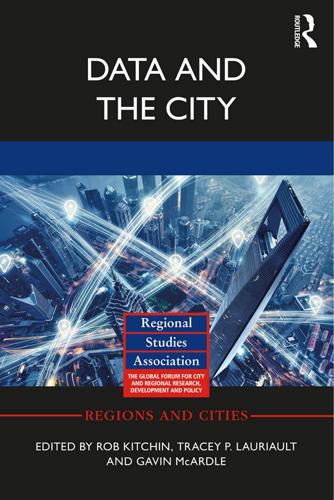
Data and the City
by
Rob Kitchin,Tracey P. Lauriault,Gavin McArdle
Published 2 Aug 2017
201 EVELYN RUPPERT 16 Beyond quantification: a role for citizen science and community science in a smart city 213 MORDECHAI (MUKI) HAKLAY Index 225 Figures 3.1 3.2 3.3 3.4 3.5 3.6 4.1 4.2 9.1 9.2 9.3 10.1 10.2 10.3 10.4 10.5 11.1 11.2 Total two-way trips: a) the zoning system, b) all trips plotted, c) trips associated with Westminster (the centre), d) trips associated with Hillingdon (Heathrow) Total two-way trips: a) the fine-scale zoning system, b) trips associated with an inner-city ward, c) trips associated with Heathrow airport Predicted against observed data: a) origin employments, b) destination working populations, c) trips from work to home The density of the scatter: different patterns at different scales Visualizing big data in tens of millions or more of transport flows Visualizations of the flows on the rail segments during a working day Urban control rooms: (a) Rio de Janeiro, (b) Dublin A data assemblage City dashboards: (a) Dublin (an analytical dashboard), (b) London (a city at a glance dashboard) Mapping the same data at three different administrative scales Boston City Score Part of OGC Web Services framework (OWS) Operations of WFS Operations of WMS Operations of WPS (synchronous mode) Organizational Service Layer in an organization Smartphone screenshot of the GeoCoins software featuring bags of coins, and red and green GPS hotspots Screenshot taken from smartphone displaying the Civic Blocks software in use 35 36 37 37 38 41 47 50 112 119 121 131 132 133 134 137 149 151 xvi Figures 11.3 13.1 13.2 13.3 13.4 13.5 13.6 13.7 13.8 16.1 Still from the Handfastr video developed by participants to describe how their prototype software allows people to form temporary smart contracts for shared banking and spending Translation and transduction of data and the city Basic schematic of the OSi data model From Ireland in maps to databased Ireland Selection of polygon based topological relations in the Prime2 model Basic schematic of the OSi data model with object titles Kitchin’s socio-technological assemblage A draft genealogy of the OSi Prime2 data model Modified dynamic nominalism and making of spaces framework Public Lab map archive 152 171 172 175 176 176 180 181 182 220 Tables 4.1 6.1 10.1 10.2 10.3 Movement and location tracking The ‘more than’ requirements for a data-encounter model of urban data provenance Service orientation principles Potential users and client applications for various service types in a city Details about various binding types 53 80 128 137 138 Contributors Pouria Amirian, Ordnance Survey, Southampton, UK.
…
It is no longer a map, but a database of potential maps (Dodge et al. 2009). High-level description of the OSi Prime2 data model In this model, Ireland is a set of objects that are topologically defined in relation to other objects, but also in relation to a reference object, which in this case is the geometry of the islands of Ireland (see Figure 13.2). These objects are topologically related, as seen in the few examples provided in Figure 13.4. While depicted as images for illustrative purposes, in the database, objects are described in code as having geometry, coordinates and attributes. In the OSi model, objects can be 176 T. P. Lauriault B B A A is within B A A touches B A A A C E B B D A = B+C+D+E B A intersects B A crosses B A is Z+1 over B Figure 13.4 Selection of polygon based topological relations in the Prime2 model.
…
The model eventually recedes into the background, becoming distant from its constructed and conceptual roots. Just like a well-functioning infrastructure, it becomes the substrate of other things Polygon Polygon Reference Polygon Polygon Polygon Ireland Polygon Figure 13.2 Basic schematic of the OSi data model. Ontologizing the city 173 with agentric-like qualities (Hughes 2004; Allen and Hecht 2001) – the model produces the data infrastructure and is a product of it, and the use of the data infrastructure transduces the city. Models abstract a world view and once operationalized into a database they can: influence how the world is viewed; can change the world of work, including tools, techniques and practices; and transform the structure of an organization and how that organization interconnects with others.
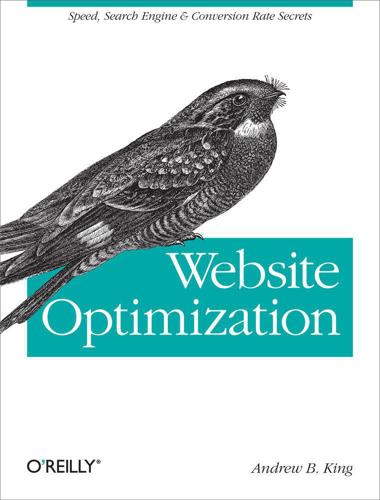
Website Optimization
by
Andrew B. King
Published 15 Mar 2008
Opera 9, for example, already supports the event streaming that follows the emerging What-WG/HTML 5 draft specification (http://www.whatwg.org/specs/web-apps/current-work) that includes event streaming, which is a Comet-like interface. Don't blaze too many trails in search of new technology and trouble, because many challenges with the use of Ajax are generally still unmet. * * * [127] Zimmerman, H. 1980. "OSI Reference Model—The IS0 Model of Architecture for Open Systems Interconnection." IEEE Transactions on Communications COM-28 (4): 425–432. [128] For more in-depth error correction and prevention, see the "Networking Considerations" chapter (written by T. Powell) in my book, Ajax: The Complete Reference (McGraw-Hill Osborne Media)
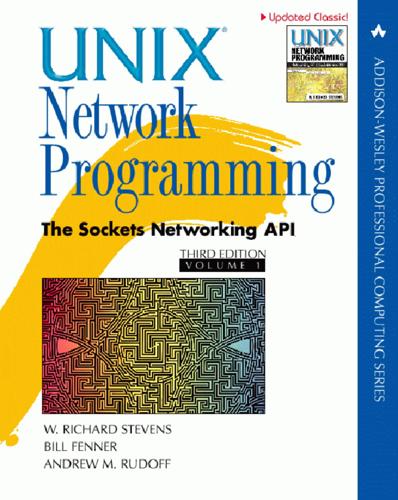
UNIX® Network Programming, Volume 1: The Sockets Networking API, 3rd Edition
by
W. Richard Stevens, Bill Fenner, Andrew M. Rudoff
Published 8 Jun 2013
We show a gap between TCP and UDP in Figure 1.14 to indicate that it is possible for an application to bypass the transport layer and use IPv4 or IPv6 directly. This is called a raw socket, and we will talk about this in Chapter 28. Section 1.7 OSI Model 7 application 6 presentation 5 session 4 transport 3 network 2 1 19 application details user process application TCP UDP IPv4, IPv6 sockets XTI kernel communications device details driver and physical hardware OSI model Internet protocol suite Figure 1.14 Layers in OSI model and Internet protocol suite. datalink The upper three layers of the OSI model are combined into a single layer called the application. This is the Web client (browser), Telnet client, Web server, FTP server, or whatever application we are using.
…
Figure Page Description 5.4 6.9 6.13 8.7 8.9 8.17 14.2 14.4 14.5 15.4 15.6 16.3 16.10 16.21 14.15 14.18 20.5 20.6 20.7 20.9 20.10 22.6 26.2 27.6 27.13 124 168 174 244 247 256 384 386 387 418 419 438 447 462 404 407 537 540 542 544 547 600 680 716 729 TCP/IPv4, protocol-dependent TCP, uses select TCP, uses select and operates on buffers UDP/IPv4, protocol-dependent UDP, verifies server’s address UDP, calls connect to obtain asynchronous errors UDP, times out when reading server’s reply using SIGALRM UDP, times out when reading server’s reply using select UDP, times out when reading server’s reply using SO_RCVTIMEO Unix domain stream, protocol-dependent Unix domain datagram, protocol-dependent TCP, uses nonblocking I/O TCP, uses two processes (fork) TCP, establishes connection then sends RST TCP, uses /dev/poll for multiplexing TCP, uses kqueue for multiplexing UDP, broadcasts with race condition UDP, broadcasts with race condition UDP, broadcasts, race condition fixed by using pselect UDP, broadcasts, race condition fixed by using sigsetjmp and siglongjmp UDP, broadcasts, race condition fixed by using IPC from signal handler UDP, reliable using timeout, retransmit, and sequence number TCP, uses two threads TCP/IPv4, specifies a source route UDP/IPv6, specifies a source route Figure 1.12 Different versions of the echo client developed in the text. 17 18 Introduction Chapter 1 Figure Page Description 5.2 5.12 6.21 6.25 8.3 8.24 14.14 15.3 15.5 15.15 22.4 22.15 25.4 26.3 26.4 27.6 27.14 28.31 E.15 123 139 178 186 242 263 400 417 418 431 593 609 668 682 684 716 730 773 943 TCP/IPv4, protocol-dependent TCP/IPv4, protocol-dependent, reaps terminated children TCP/IPv4, protocol-dependent, uses select, one process handles all clients TCP/IPv4, protocol-dependent, uses poll, one process handles all clients UDP/IPv4, protocol-dependent TCP and UDP/IPv4, protocol-dependent, uses select TCP, uses standard I/O library Unix domain stream, protocol-dependent Unix domain datagram, protocol-dependent Unix domain stream, with credential passing from client UDP, receives destination address and received interface; truncated datagrams UDP, binds all interface addresses UDP, uses signal-driven I/O TCP, one thread per client TCP, one thread per client, portable argument passing TCP/IPv4, prints received source route UDP/IPv6, prints and reverses received source route UDP, uses icmpd to receive asynchronous errors UDP, binds all interface addresses Figure 1.13 Different versions of the echo server developed in the text. 1.7 OSI Model A common way to describe the layers in a network is to use the International Organization for Standardization (ISO) open systems interconnection (OSI) model for computer communications. This is a seven-layer model, which we show in Figure 1.14, along with the approximate mapping to the Internet protocol suite. We consider the bottom two layers of the OSI model as the device driver and networking hardware that are supplied with the system. Normally, we need not concern ourselves with these layers other than being aware of some properties of the datalink, such as the 1500-byte Ethernet maximum transfer unit (MTU), which we describe in Section 2.11.
…
With the Internet protocols, there is rarely any distinction between the upper three layers of the OSI model. The sockets programming interfaces described in this book are interfaces from the upper three layers (the ‘‘application’’) into the transport layer. This is the focus of this book: how to write applications using sockets that use either TCP or UDP. We already mentioned raw sockets, and in Chapter 29 we will see that we can even bypass the IP layer completely to read and write our own datalink-layer frames. Why do sockets provide the interface from the upper three layers of the OSI model into the transport layer? There are two reasons for this design, which we note on the right side of Figure 1.14.

The Stack: On Software and Sovereignty
by
Benjamin H. Bratton
Published 19 Feb 2016
See http://tronweb.super-nova.co.jp/tronlogo.html; http://tronweb.super-nova.co.jp/homepage.html; and http://en.wikipedia.org/wiki/TRON_Project. 30. As discussed, the four-layer TCP/IP “won,” but for purposes of explication, the open systems interconnection (OSI) seven-layer model provides a more detailed profile. As indicated, the OSI model is a standardized subdivision of component zones and functions of information networks into logical discrete layers, each of which provides specific “services” to the layer just beneath in the stack and receives services from the layer just above it. In this, it is a classic tiered stack architecture, both as a functional distributed machine and its abstract model, and worth some detail.
…
The shape of The Stack, our accidental megastructure (which contains this Internet but also much more), is also built on some of these models and their particular governing steerage of information networks. The history of Internet stacks also makes clear that the authoring of architectures can produce metasystemic accidents that in turn can themselves counterauthor and redesign the platform in unintended but successful ways. Consider the lessons of the OSI (open systems interconnection) network model and the TCP/IP network model, on which global Internet connectivity is now largely based. The specification of both standards began in the 1970s, and the latter was more fully adopted by the mid-1980s. For OSI, the network represented has seven discrete layers, from the application layer addressing Users at the “top” down to the physical layer (which today may be fiber-optic cable channeling pulses of light).
…
., fiber optics instead of copper wire at the physical layer, better router software, an application with better features and security) without disrupting the existing components, so long as the new technology adheres to the protocols established by the platform model that allow it to communicate with its vertically adjacent layers, above and below. In principle any machine could be inserted in a layer of the network if it can adhere to the necessary grammar that would allow it to communicate with its most proximate neighbors. For The Stack, the OSI model serves as a literal and technical prototype for how network architectures operate between very small and large scales and, as the primary abstraction, or universal diagram, for how its heterogeneous participants can arrange communication in a vertical assemblage, now at a megastructural scale. The network stacks conceived in the 1970s and 1980s by teams led by Vint Cerf (TCP/IP) and Charlie Bachmann (OSI) (among many others) were designed to solve complex but very specific transmission and communication problems.
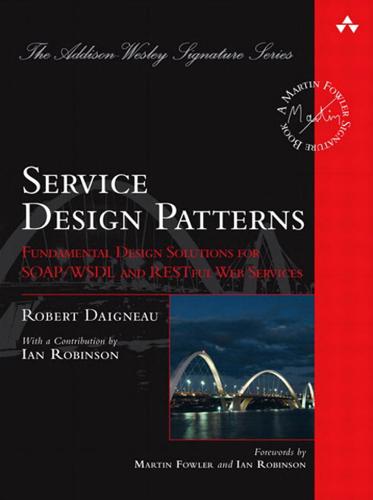
Service Design Patterns: Fundamental Design Solutions for SOAP/WSDL and RESTful Web Services
by
Robert Daigneau
Published 14 Sep 2011
In short, this means that hyperlinks should be used to guide client applications through various workflow state transitions. Many Resource APIs do not meet this requirement. For more information on this topic, see the Linked Services pattern (77). – Layered system: All web services, regardless of the API style, meet this constraint if we look at them from the perspective of the Open Systems Interconnection (OSI) Model. – Code on demand: This constraint states that client applications can be extended if they are allowed to download and execute scripts or plug-ins that support the media type provided by the service. Adherence to this constraint is therefore determined by the client rather than the API. R ESOURCE API 47 Example: A Resource API Implemented in Java and JAX-RS This example shows a partial implementation of a Resource API for music queries.
…
They free developers from having to create SQL and manage database transactions. Related: Domain Model, Active Record, Data Mapper [POEAA] Open Data Protocol (OData)—A Microsoft specification that extends Atom Publishing Protocol. This protocol defines mechanisms for querying and updating resources exposed over HTTP. (www.odata.org/) Open Systems Interconnection (OSI) Model—A standard that defines common layers used by networked systems. www.itu.int/rec/dologin_pub.asp?lang=e&id=T-REC-X.200-199407-I!!PDFE&type=items 287 288 G LOSSARY Origin Server—The web server from which specific response data originates. This term is used to differentiate web servers from web caches (e.g., proxies) which can also provide response data.
…
See also Fire-and-Forget Operation Script [POEAA], 273 Operation Scripts alternative to Transaction Script, 135 description, 131 effects on web service evolution, 266 examples, 146–148 overview, 144–145 use for, 131 Operation Scripts, considerations application gateways, 146 duplication of application logic, 145–146 Inversion of Control [IoC], 145 local vs. distributed transactions, 145 OPTIONS verb, Resource API, 41–42 Orchestration, effects on web service evolution, 266 Orchestration Engines, 224–225 Origin server, 288 ORM (Object Relational Mapper), 287. See also Domain Model OSI (Open Systems Interconnection) Model, 287 Out-of-process calls, 8 P Parsing request data, DTOs, 95–96 URIs with Service Controller, 87 Partial failures, web service API styles, 16–17 Patterns of Enterprise Application Architecture, 13, 133 Pipeline, 288. See also Pipes and Filters [EIP] Pipes and Filters [EIP]. See also Pipeline alternative to Workflow Connector, 156–157 description, 273 Service Interceptor, 196 Plug-in, definition, 288 use with Resource API, 43 Polling, Request/Acknowledge pattern, 62–63 Polling Method, Asynchronous Response Handler, 185–188 POST method, 41–42 Postel's Law, 244–245, 288.

WTF?: What's the Future and Why It's Up to Us
by
Tim O'Reilly
Published 9 Oct 2017
In the 1980s, a separate, more traditionally constituted international standards committee had also gotten together to define the future of computer networking. The resulting Open Systems Interconnect (OSI) model was comprehensive and complete, and one of the industry pundits of the day wrote, in 1986: “Over the long haul, most vendors are going to migrate from TCP/IP to support Layer 4, the transport layer of the OSI model. For the short term, however, TCP/IP provides organizations with enough functionality to protect their existing equipment investment and over the long term, TCP/IP promises to allow for easy migration to OSI.”
…
See also Airbnb; Lyft; Uber on-demand talent and resources, 67–68 on-demand technology, 310 O’Neil, Cathy, 167–68 Open Source Initiative, 18 “Open Source Paradigm Shift, The” (O’Reilly), 23, 29 open source software, 5–7, 8–9, 15 collaborative model, 35 evolution vs. design, 13–14 Freeware Summit, 15–16 innovation related to, 127 learning by doing, 339 MapReduce, 325 naming decision, 16–19 and next generation of applications, 23–24 reason for making Perl free, 16–17 Open Source Summit, 19 Open Systems Interconnect (OSI) model, 108 operating systems, 24, 27–28, 35, 41. See also individual operating systems “Operations: The New Secret Sauce” (O’Reilly), 121 Oram, Andy, 25–26 Orbitz, 178 O’Reilly, Tim, ix, xvii, 20, 71–75 O’Reilly AlphaTech Ventures, 50, 285–88 O’Reilly Media acquisition procedure, 279 and Amazon, 110–13 core strategic positioning, 48–50 ebook publishing venture, 28–29, 50 evaluating new industries, xi–xii googling name, 159–60 as startup, 274–75, 284–85 tracking trends to identify vectors, 37–40 Organisation for Economic Co-operation and Development (OECD), 170 Oringer, Jon, 283 Overton Window, 268–69 Overture, 161 “Owner’s Manifesto” (Dougherty), 337 Pacific Railroad Surveys, 4 Page, Larry, 132, 157, 160, 289–90 Pahlka, Jennifer “Jen,” 129, 137–38, 144–46, 318, 319 Paine, Thomas, 306 parental leave, 310–11 Pariser, Eli, 199–200 Park, Todd, 144, 146–47 Pascal’s Wager, 361–62 Patacconi, Andrea, 246 Patil, D.

The Art of Scalability: Scalable Web Architecture, Processes, and Organizations for the Modern Enterprise
by
Martin L. Abbott
and
Michael T. Fisher
Published 1 Dec 2009
Asynchronous Transfer Mode is a packet switching protocol that breaks data into cells and provides OSI layer 2, the data link. ATM was the core protocol used on the public switched phone network. As the World Wide Web began in 1991 as a CERN project built on top of the Internet, the cloud began to be used as a term and symbol for the underlying infrastructure. OSI Model The Open Systems Interconnection Reference Model, or OSI Model, is a descriptive abstraction of the layered model of network architecture. It is used to describe the different components of the network and how they are interrelated. There are seven layers, and starting from the lowest layer, they are as follows: 1. Physical. This layer contains the physical devices such as cards, cables, hubs, and repeaters. 2.

Life After Google: The Fall of Big Data and the Rise of the Blockchain Economy
by
George Gilder
Published 16 Jul 2018
To understand the contemporary Internet, you have to take these hardware miracles for granted and build castles in the sky—in computer language, “stacks”—that can imitate hardware and transcend it in virtual threads and cores and chains. But the evolution from micro-matter to metaverse begins with the seven-layer netplex scheme of the Open Systems Interconnection (OSI) model of the International Standards Organization. In the OSI stack, above the physical layer is the datalink. This is the medium where hardware becomes “firmware” and software that define the electrical specifications, timing rules, and electron-photon conversions that enable the transmission of information across a link from one node or computational address to the next.
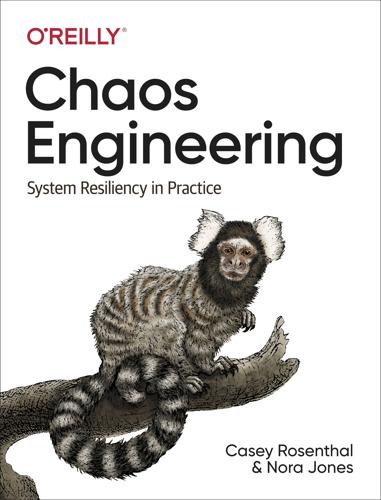
Chaos Engineering: System Resiliency in Practice
by
Casey Rosenthal
and
Nora Jones
Published 27 Apr 2020
For instance, if your goal is to simulate network failure for your component you might be able to introduce such failure at the application protocol layer. Say you can drop connection on the other side, or within the library framework you’re using. This provides you with an isolated understanding of cause and effect on your service. However, if network failure happens in real life it is just as likely to happen due to a different level of the ISO-OSI model, a hardware malfunction, a driver failure, or a routing change. Compare two different routes for injecting failure: on the transport level through shutting down the TCP stack at the machine or plain pulling the wire out of the network card. The latter would be more realistic from a simulating cause-effect perspective.
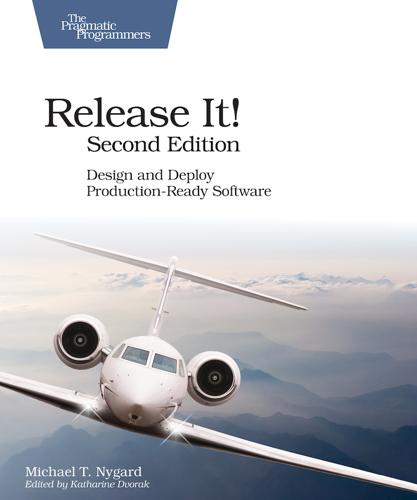
The Nature of Software Development: Keep It Simple, Make It Valuable, Build It Piece by Piece
by
Ron Jeffries
Published 14 Aug 2015
The service can refuse all authentication credentials. These failures fall into distinct categories: network transport problems, network protocol problems, application protocol problems, and application logic problems. With a little mental exercise, you can find failure modes in every layer of the seven-layer OSI model. It would be costly and bizarre to add switches and flags to applications that would allow them to simulate all of these failures. Who would want to risk turning on a “simulated failure” once the system is promoted into production? Integration testing environments are good at examining failures only in the seventh layer—the application layer—and not even all of those.
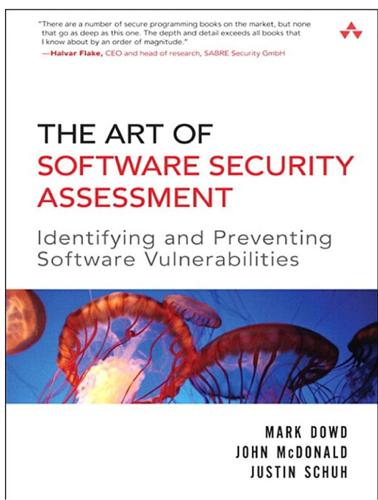
The Art of Software Security Assessment: Identifying and Preventing Software Vulnerabilities
by
Justin Schuh
Published 20 Nov 2006
A good network layout must account for a number of concerns in addition to security, such as cost, usability, and performance. Fortunately, a lot of reference material is available on the topic, so this discussion has been limited to a few basic concepts in the following sections. If you’re not familiar with network fundamentals, you should start with a little research on TCP/IP and the Open Systems Interconnection (OSI) model and network architecture. Segmentation Any discussion of network security needs to start with segmentation. Network segmentation describes how communication over a network is divided into groupings at different layers. TCP/IP networks are generally segmented for only two reasons: security and performance.
…
There will always be legitimate reasons to prevent a deployment from having the ideal segmentation. However, you should aware of these contributing factors and determine whether the environment is adequately segmented for the application’s security requirements. Layers 5 and 6: Session and Presentation Some layers of the OSI model don’t map cleanly to TCP/IP; for example, the session and presentation layer generally get pushed up into the TCP/IP application layer. However, collectively these layers provide a useful distinction for certain application protocols. Platform-specific features, such as RPC interfaces and named pipes, are generally accepted as session- and presentation-layer protocols.
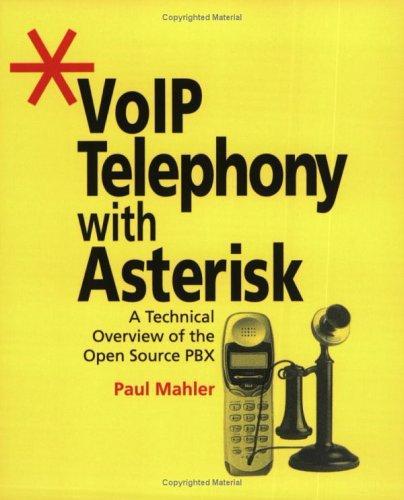
VoIP Telephony with Asterisk
by
Unknown
Published 8 Mar 2011
T-Carrier lines are extremely popular for business users who wish to connect to theInternet or the PSTN. T-Carrier and DS0 The "T" designation specifies the physical interface for services obtained from a local carrier. That is, T-Carrier specifies a physical set of wires, repeaters, connectors, plugs, jacks, etc. In terms of the OSI standard network model (briefly described in the appendix,) T-Carrier is the standard for layers one and two. TCarrier specifies the physical connection and the carrier signal sent over that physical connection. Data is carried on top of the T-Carrier. Data is carried on a TCarrier channel at a digital data rate that is calledDigital Signal Level Zero or DS0.
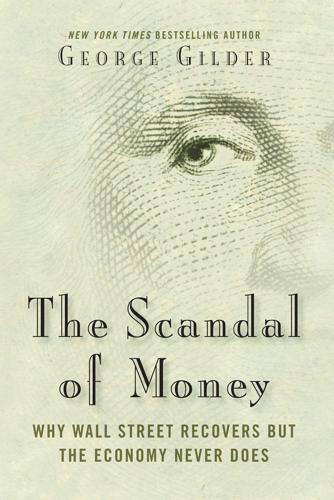
The Scandal of Money
by
George Gilder
Published 23 Feb 2016
Despite imprudent governmental interference in this planetary utility, it remains a bastion of American power, with U.S. companies such as Apple, Google, Amazon, Microsoft, Facebook, eBay, Cisco, Qualcomm, and scores of others capturing the bulk of all Internet revenues. The Internet plays a central role in the American economy. But there is a profound flaw in its architecture. Its software stack lacks a trust and transactions capability. Its OSI (open systems interconnection) model defines seven layers (including the physical layer, the data link layer, the network layer, the transport layer, the session layer, the presentation layer, and the application layer). While some of the layers have merged, none of the existing layers provides trust or validation or factuality or veracity of real monetary values.

The Future of the Internet: And How to Stop It
by
Jonathan Zittrain
Published 27 May 2009
YOCHAI BENKLER, THE WEALTH OF NETWORKS 47 (2006). CHAPTER 4. THE GENERATIVE PATTERN 1. See KEVIN BURNS, TCP/IP ANALYSIS AND TROUBLESHOOTING TOOLKIT 5-28 (2003), available athttp://www.wiley.com (search for ISBN “978-0-471-42975-3” and select “Read Excerpt 1”) (describing the seven-layer OSI protocol model and the four-layer DOD protocol model, the two foundational network communications protocols). 2. Thus this book’s earlier description, in Chapter One, of four layers: technology, including physical and protocol; application; content; and social. 3. See infra note 72. 4. Microsoft and Apple have both shown interest in becoming one-stop shops for applications that run on their respective platforms.

Site Reliability Engineering: How Google Runs Production Systems
by
Betsy Beyer
,
Chris Jones
,
Jennifer Petoff
and
Niall Richard Murphy
Published 15 Apr 2016
One solution is to perform a Network Address Translation. However, this requires keeping an entry of every single connection in the tracking table, which precludes having a completely stateless fallback mechanism. Another solution is to modify information on the data link layer (layer 2 of the OSI networking model). By changing the destination MAC address of a forwarded packet, the balancer can leave all the information in upper layers intact, so the backend receives the original source and destination IP addresses. The backend can then send a reply directly to the original sender—a technique known as Direct Server Response (DSR).

The Best of 2600: A Hacker Odyssey
by
Emmanuel Goldstein
Published 28 Jul 2008
Your phone converses with BTSs using FDMA/TDMA over this link. The BSCs talk to the BTSs they control over what is termed an Abis link, and talk to the switch (MSC) over an A link using the same Message Transfer Part (MTP) packets as defined by SS7. The highest layer of an SS7 MTP (akin to the “Application” layer in the OSI model) is known as the TCAP, for Transaction Capabilities Application Part. In GSM nomenclature, the TCAP contains the MAP, for Mobile Application Part, which can be rather complex. The MAPs contain the actual messages sent between the BSC and the MSC, and between the MSC and all other entities of the network subsystem.

The Future of Ideas: The Fate of the Commons in a Connected World
by
Lawrence Lessig
Published 14 Jul 2001
., Noonan, “Internet Decentralization,” 198 (“In spite of its commons nature, or perhaps because of it"). 12 See Yochai Benkler, “From Consumers to Users: Shifting the Deeper Structures of Regulation,” Federal Communications Law Journal 52 (2000): 561, 562-63 (“These choices occur at all levels of the information environment: the physical infrastructure layer—wires, cable, radio frequency spectrum—the logical infrastructure layer—software—and the content layer. . . .”). 13 I'm simplifying vastly from both the OSI seven-layer model of network design, see Douglas E. Comer, Internetworking with TCP/IP, 4th ed. (Upper Saddle River, N.J.: Prentice-Hall, 2000), 181-95; Pete Loshin, TCP/IP Clearly Explained, 2nd ed. (Boston: AP Professional, 1997), 12-18; and Berners-Lee's four-layer description (trans-mission, computer, software, and content) in Tim Berners-Lee, Weaving the Web: The Original Design and Ultimate Destiny of the World Wide Web by Its Inventor (San Francisco: HarperSanFrancisco, 1999), 129-30. 14 Certain speech has always been regulated on the telephone.
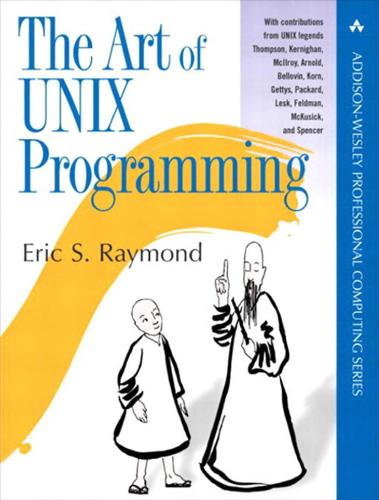
The Art of UNIX Programming
by
Eric S. Raymond
Published 22 Sep 2003
The IETF standards process is designed to encourage standardization driven by practice rather than theory, and to ensure that standard protocols have undergone rigorous peer review and testing. The success of this model is evident in its results — the worldwide Internet. * * * [147] A Web search is likely to turn up a popular page comparing the OSI 7-layer model with the Taco Bell 7-layer burrito — unfavorably to the former. [148] This line was first uttered by senior IETF cadre Dave Clark at the tumultuous 1992 meeting during which the IETF rejected the Open Systems Interconnect protocol. [149] RFC 1149 is available on the Web. Not only that, it has been implemented

Applied Cryptography: Protocols, Algorithms, and Source Code in C
by
Bruce Schneier
Published 10 Nov 1993
Table 10.1 lists different types of algorithms and their properties [804]. 10.3 Encrypting Communications Channels This is the classic Alice and Bob problem: Alice wants to send Bob a secure message. What does she do? She encrypts the message. In theory, this encryption can take place at any layer in the OSI (Open Systems Interconnect) communications model. (See the OSI security architecture standard for more information [305].) In practice, it takes place either at the lowest layers (one and two) or at higher layers. If it takes place at the lowest layers, it is called link-by-link encryption; everything going through a particular data link is encrypted.